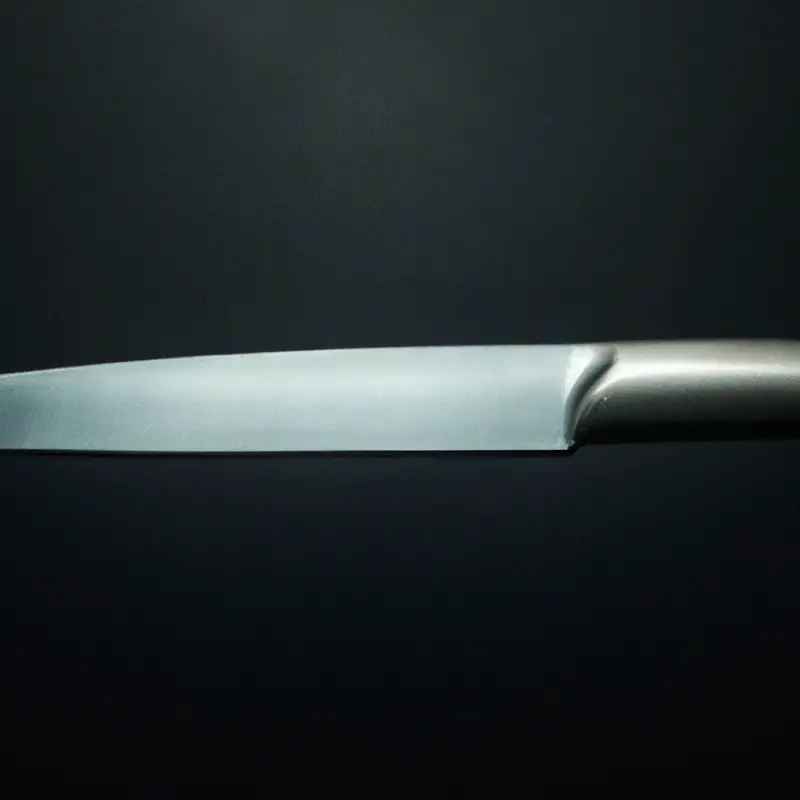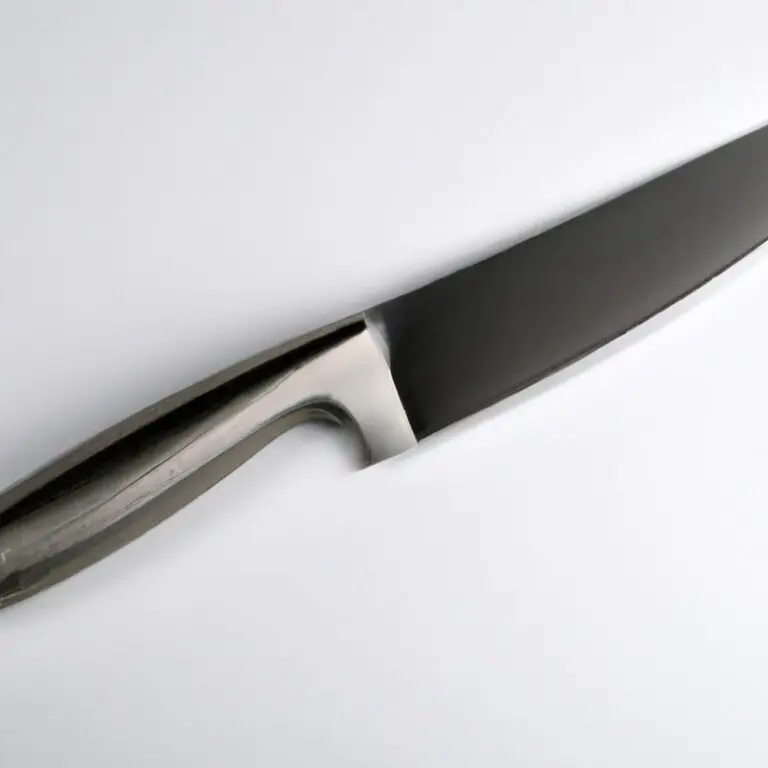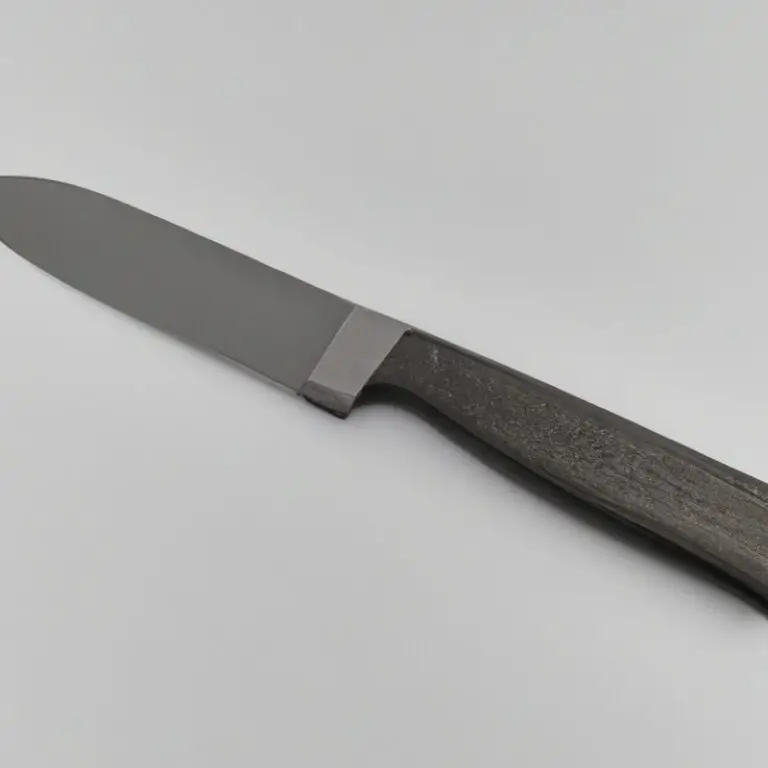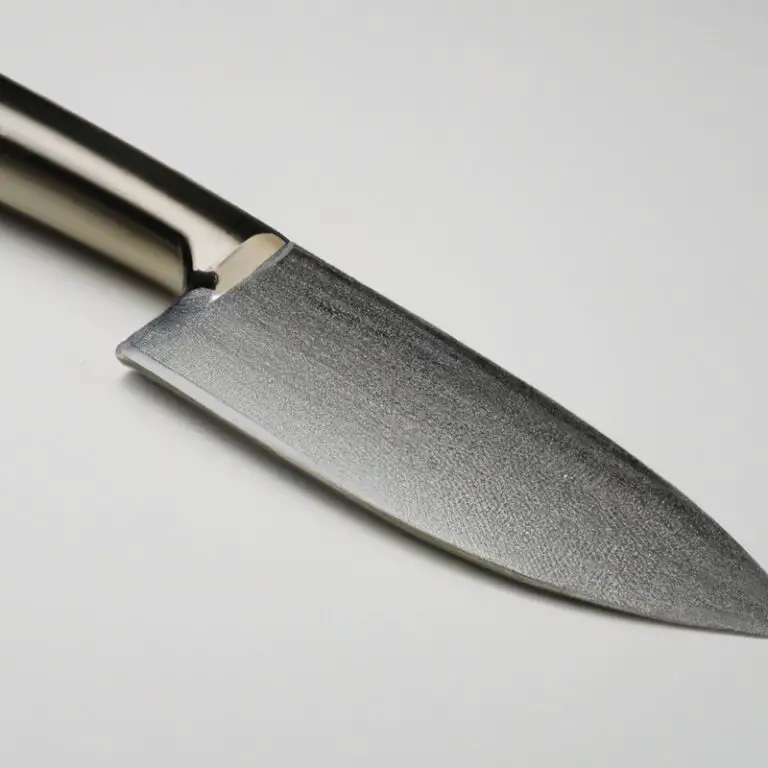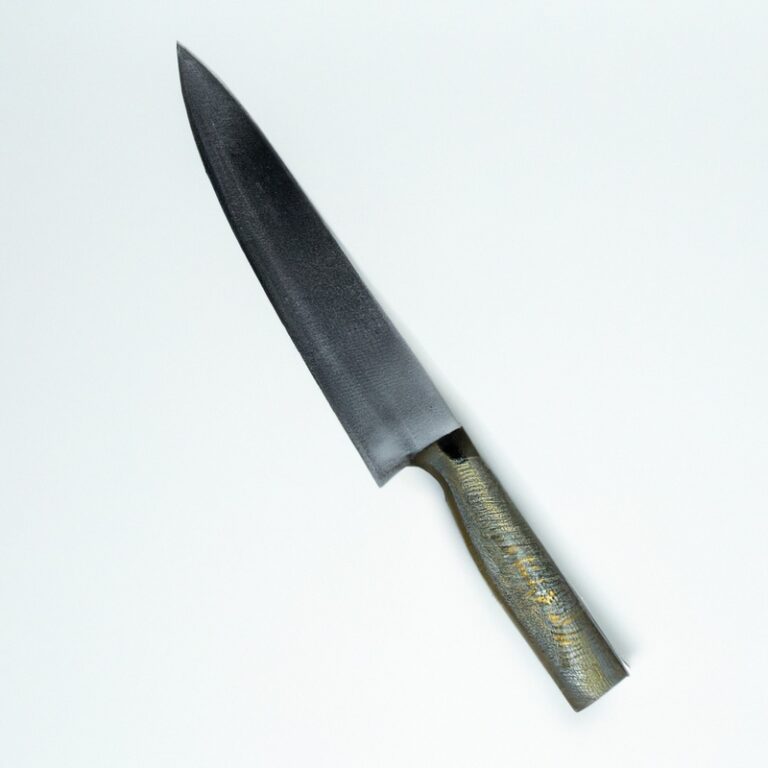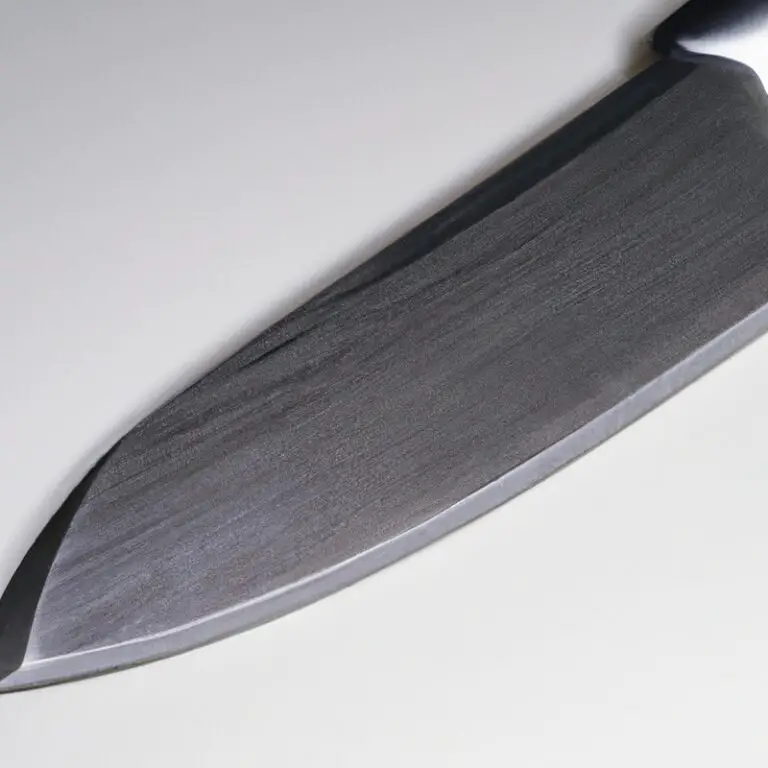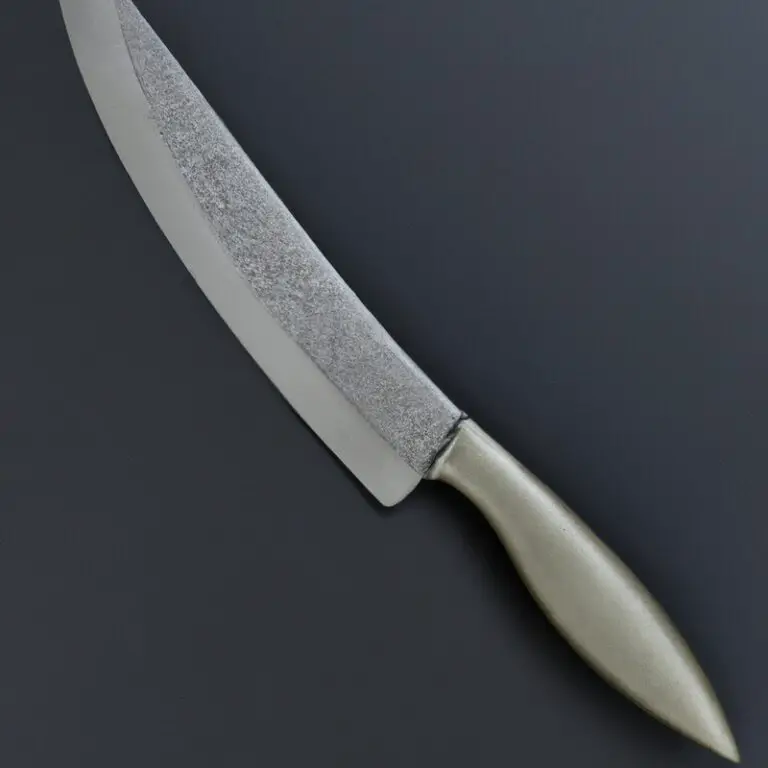How To Use Sharpening Stones To Maintain The Sharpness Of Gyuto Knives? Slice With Ease!
Key Takeaways:
- Sharpening stones are a crucial tool for maintaining the sharpness of Gyuto knives.
- Proper technique and patience are key when using sharpening stones on your knives.
- It’s important to choose the right grit for your sharpening stone based on the level of dullness on your knife.
- Regular maintenance with sharpening stones can help extend the life of your Gyuto knife and save you money in the long run.
Do you love using your Gyuto knife but find it frustrating when it’s no longer razor-sharp? Maintaining a sharp edge can be challenging without the right tools and techniques.
Fortunately, using sharpening stones is a cost-effective and practical way to maintain the sharpness of your knife.
In this article, I will guide you on using sharpening stones to sharpen and maintain the sharpness of your Gyuto knife. We will go through understanding the different types of sharpening stones and their grits, how to prepare them for use, how to assess the sharpness of your knife, and much more.
So let’s dive in and sharpen those blades!
| Step | Action |
|---|---|
| 1 | Choose the right sharpening stone: a medium-grit stone (1000 grit) for regular maintenance and a fine-grit stone (6000 grit) for a polished edge. |
| 2 | Prepare the stone: soak the stone in water for at least 10-15 minutes to saturate the pores with water and to prevent the blade from overheating. |
| 3 | Position the stone: place the stone on a flat and stable surface to prevent it from sliding or moving around during use. |
| 4 | Hold the knife correctly: hold the knife with your dominant hand at a 15-20 degree angle, keeping the blade in constant contact with the stone. |
| 5 | Sharpen the knife: move the blade back and forth across the stone in a sweeping motion, applying gentle pressure and maintaining a consistent angle. |
| 6 | Flip the blade and repeat: when one side is sharpened, flip the blade and repeat the process for the other side. |
| 7 | Clean the knife: wipe the blade clean with a damp cloth to remove any metal residue and inspect the blade for sharpness. |
| 8 | Finish the edge with a fine-grit stone: repeat the sharpening process on a fine-grit stone to polish the blade and refine the edge. |
Understanding the basics: Types of sharpening stones and their grits
Sharpening stones come in different types and grits, each serving a specific purpose in sharpening your Gyuto knife. Coarse grit stones, usually between 100-400 grit, are used to repair damaged or dull knives and reshape the angle of the edge.
Medium grit stones, with grits ranging from 700-2000, are used to refine and further sharpen the edge.
Finally, fine grit stones, often above 3000 grit, are utilized to polish and hone the blade for a razor-sharp finish. The most common types of sharpening stones are water stones, oil stones, and diamond stones.
Water stones are made from a soft material and require soaking before use, while oil stones are made of harder materials and require oil to be applied before sharpening.
Diamond stones, on the other hand, are made of a material with diamond particles and are often used for coarse grit sharpening. It’s essential to choose the right type of sharpening stone and grit depending on the condition of your knife’s edge.
A dull knife with a lot of nicks and chips will require a coarse grit stone, while a knife with a relatively sharp edge will require a finer grit stone.
With the correct sharpening stone and grit, you can maintain the sharpness of your Gyuto knife.
Preparing the sharpening stones for use: Soaking vs splash and go
Preparing the sharpening stones for use is an essential step in maintaining the sharpness of your Gyuto knife. There are two common methods for preparing sharpening stones: soaking and splash and go.
Soaking stones require soaking in water for 10-15 minutes before use, allowing the stone to absorb water and prevent excessive friction.
Soaking also helps to prevent the stone from cracking due to sudden temperature changes. Splash and go stones, on the other hand, do not require soaking and can be used immediately after splashing them with water.
This method is more convenient and saves time, but can potentially lead to increased heat and friction on the blade.
The choice between soaking and splash and go largely depends on personal preference and the specific type of stone being used. Soaking stones are ideal for coarse-grit stones and for those who prefer a slower, more controlled sharpening process.
Splash and go stones are better for fine-grit stones and for those who prefer a faster, more efficient sharpening process.
Regardless of the method chosen, make sure to always prepare your sharpening stone properly before use to ensure the best possible sharpening results for your Gyuto knife.
Assessing the sharpness of your Gyuto knife: Cutting Edge Tests
Assessing the sharpness of your Gyuto knife can be done with cutting edge tests. One simple test involves cutting through a piece of paper.
If the knife glides through the paper smoothly and without any tearing, it is considered sharp.
Another test is to slice through a tomato without using any downward pressure. If the tomato is cut cleanly and easily, your knife is sharp.
You can also try cutting through a potato, an onion, or a piece of meat to gauge your knife’s sharpness.
If the knife cuts through with ease and precision, your knife is sharp. Remember to always be careful when handling sharp knives, and always test the edge before using it for prolonged periods to avoid injury or damage to the blade.
Setting the angle for sharpening: Finding the correct angle for your knife
To set the angle for sharpening, you need to know the angle at which the knife was originally sharpened and at which angle it needs to be sharpened. The standard angle for most Japanese-made Gyuto knives is 15 to 16 degrees, while Western-style knives require a 20 to 22 degree angle.
You can determine the angle of your knife by using an angle guide or protractor.
Once the angle is identified, you can start sharpening your knife by holding it at that angle and making sure to maintain it throughout the sharpening process. For beginners, it is recommended to start with a higher angle and work your way down to the desired angle slowly.
Remember that the angle of sharpening will depend on the specific blade and purpose of the knife.
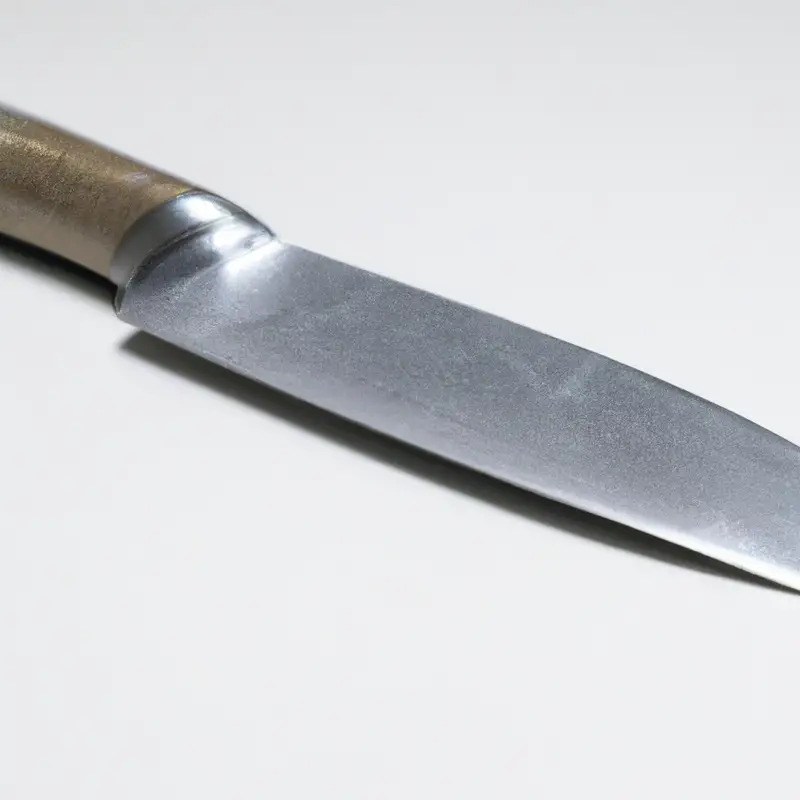
Beginning the sharpening process: Coarse Grit sharpening
Coarse grit sharpening is the first step in the sharpening process for your Gyuto knife. Coarse grit stones are used to remove any chips, nicks, or other damages on the blade’s edge.
It is important to take your time and make sure you are using the correct angle, typically between 15-20 degrees.
It is recommended to start with a 400-600 grit stone and work your way up to a higher grit once the edge is sharpened to your liking. Don’t forget to frequently clean your stone and knife to prevent any build-up.
After the coarse grit sharpening, move onto finer grit stones to further refine the blade’s edge.
Moving onto Fine Grit stones: Fine-tuning the blade’s Edge
Moving onto Fine Grit stones is the next step after Coarse Grit sharpening. Fine Grit stones have a grit range of 1000-8000, which can help you achieve a polished and sharp blade.
These stones can remove the scratches left by Coarse Grit stones and refine the edge of your Gyuto knife.
Fine Grit stones are ideal for honing and maintaining the sharpness of your knife. Ensure that you do not rush the process and be patient when using Fine Grit stones.
Take your time to achieve a razor-edge finish.
Keep in mind that using a higher grit stone after a lower grit stone is crucial for building a sharpening foundation. Remember to clean the stone with water after every use to maintain its longevity.
Understanding the importance of burrs in sharpening: Detecting and removing burrs
When sharpening your Gyuto knife, it’s important to understand the role of burrs in the sharpening process. A burr is a thin, wire-like edge that forms on the opposite side of the blade as you sharpen one side.
While burrs may seem like a sign of a sharp blade, they can actually interfere with a clean cut.
To detect burrs, lightly run your nail or a piece of paper across the edge of the blade. If it catches or shreds the material, then there may be a burr present.
To remove burrs, use a honing rod or strop, gently pulling the burr off with each pass.
It’s important to remove all burrs from your blade before moving on to finer grit stones to achieve a razor-sharp edge. Remember to always handle your sharpening stones carefully to avoid creating more burrs.
Polishing the blade for a razor-sharp finish: Using ultra-fine grit stones
Polishing the blade with ultra-fine grit stones is the final step in sharpening your Gyuto knife. These stones are typically between 6000-8000 grit and are used to remove any remaining burrs on the blade’s edge and refine the edge to a razor-sharp finish.
To begin, place the ultra-fine grit stone on a stable surface, make sure it’s clean, and apply a few drops of water.
Next, hold the knife at the correct angle, usually around 15-20 degrees, and using light pressure, draw the knife along the stone’s surface, alternating sides with each stroke. Be sure to maintain a consistent angle and use a light touch to avoid damaging the blade.
After a few passes, turn the knife over, and repeat the process on the other side.
Once you’ve achieved the desired sharpness, clean the blade with water and dry it thoroughly. Using an ultra-fine grit stone can take your Gyuto knife’s sharpness to the next level, providing a razor-sharp finish that will enhance your cutting experience.
Testing the sharpness: How to confirm your knife is sharpened
To test the sharpness of your Gyuto knife, you can perform a few simple tests. The first test is cutting through a piece of paper.
A sharp knife should be able to slice through a piece of paper smoothly and without tearing.
Another test involves cutting through a tomato or an onion. A sharp knife will cleanly slice through the skin and flesh of the vegetable without causing any crushing or tearing.
You can also try running your fingertip lightly over the blade’s edge.
A sharp knife should feel slightly abrasive, but not so much that it cuts your skin. Finally, you can hold the blade at a 45-degree angle and check for any reflections on the edge.
A completely sharp edge will not reflect light and will appear dull.
If your knife passes all these tests, congratulations! You have successfully sharpened your Gyuto knife.
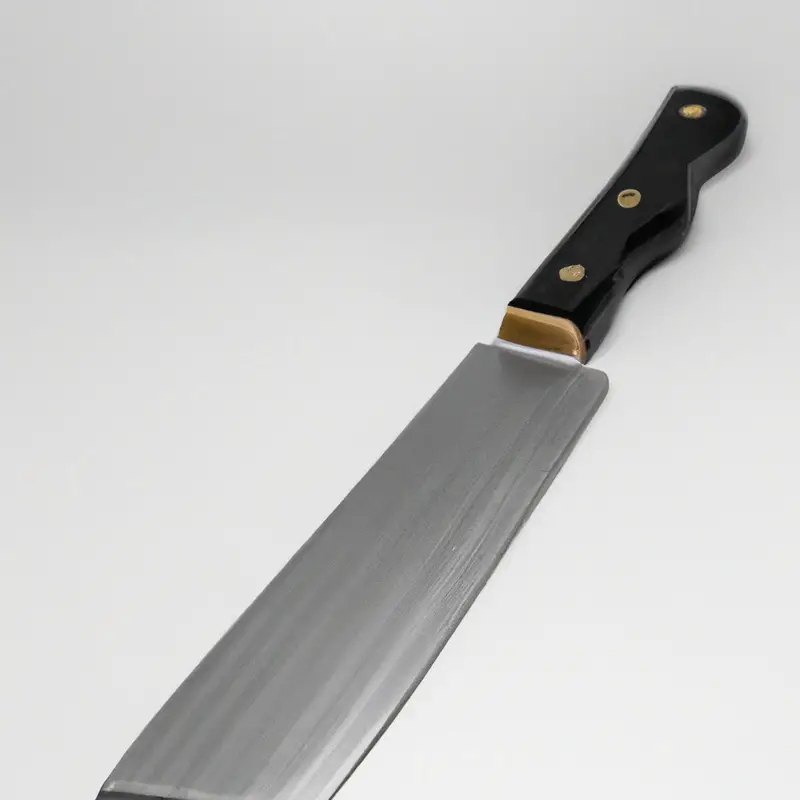
Honing the blade with a leather strop: Keeping your Gyuto knife razor-sharp over time
Honing the blade with a leather strop is an effective way to maintain the sharpness of your Gyuto knife over time. Using a strop made of high-quality leather can help to remove any remaining burrs and align the blade’s edge for a razor-sharp finish.
To use a leather strop, apply a thin layer of honing compound onto the leather and then run the blade along the strop at the same angle as when sharpening.
Make sure to alternate sides evenly to ensure both sides of the blade receive equal treatment. Honing should be done regularly, about every 2-3 uses, to maintain the sharpness of your blade.
Stropping can be done in between sharpening sessions to help maintain the blade’s edge.
Using a leather strop is a cost-effective and easy way to keep your Gyuto knife sharp and in top condition for a longer time. With regular honing, your Gyuto knife will be able to perform at its best for many years to come.
Final Verdict
Maintaining the sharpness of your Gyuto knife through sharpening stones requires patience, practice, and attention to detail. By understanding the basics of sharpening stones, preparing them properly, and assessing your knife’s sharpness, you can set the correct angle, move through the grits, remove burrs, and polish the blade for a razor-sharp finish.
By following these steps, you will not only extend the life of your knife, but also achieve a precision cut every time.
Remember that the key to success is investing time in sharpening and honing your skills. With practice, you can become an expert in maintaining the sharpness of your Gyuto knife.
Sharpen with confidence and enjoy the benefits of a well-maintained knife.

